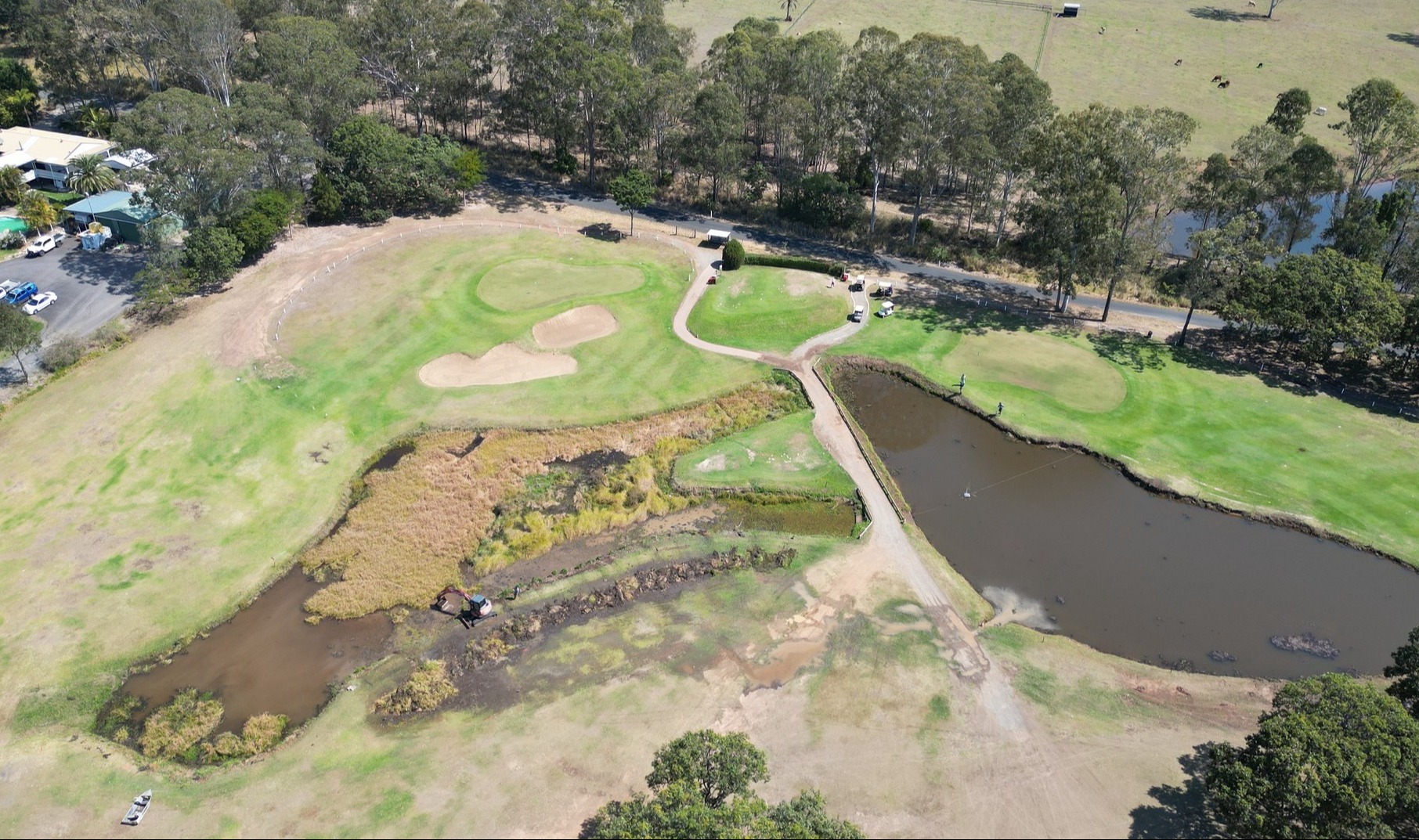24 Sep 2024 | Clubs and Facilities |
Feature: Pine Rivers on the road to complete sustainability
by Patrick Taylor

With tee sheets full almost every day, a thriving indoor golf facility, and plans to acquire land for a second golf course, it's almost inconceivable to think that Pine Rivers Golf Club in Queensland was on the brink of closing its doors in 2017.
Located in Dakabin, Pine Rivers is an extremely popular public course serving the growing golf demand in Brisbane's north, but General Manager Byron Smith says it has been a long road getting the club back on track.
"We were pretty much broke, out the door, almost closing down. The whole committee had quit," said Smith.
Smith came on in 2017, and alongside a new President, set about turning the club around and starting to work through solutions to a myriad of issues.
"We got through to 2019 and we were able to establish where we were," said Smith.
"We had to get rid of all paid positions and then we started again.
"Now we've gone from six employees in 2019, and I think we've got about 29 now."
While getting the club back on its feet in a financial sense was a mountain to climb, what is truly remarkable are the steps Pine Rivers has taken to transform its course, and the practices used to maintain it.
"There wasn't much that we could do to the course in the first couple of years because we were just too busy balancing the club up, and just financially getting it stable again," said Smith.
"As soon as we could though, we looked at one of the biggest challenges in that we have no municipality at all. We have no town water, no town sewage.
"All of the water for the course itself is from the sky. That's it. We have no other access to any water.
"That's where the problems sort of began and that's what we started to work on."

The environment and site at Pine Rivers does have some significant positives, including a 50-metre elevation drop, and a good amount of rain (albeit in a small window), but as Smith explains, it was a matter of taking advantage of what they had.
"Most of our water comes in a three-month period," he said.
"Our idea was about how do we retain the water that we get in, how do we disperse it properly, and then use it within the course to stop the erosion."
Smith explains that over the years neglect led to the course becoming ruined by the heavy rains, and working out a way to not only avoid this damage, but to turn the heavy downpours into an advantage, was at the top of Pine Rivers' priorities.
"We dealt with the root cause of the issue, the saturation of soil and the microbiology underneath that and how do we feed that, which then eliminated pests and all of that kind of stuff," he said.
"That comes with a lot of other factors including soil management and the chemical use.
"We limited our chemical use, and we now estimate that probably by 2026 we'll be at about 10% chemical use just because of these practices.
"When the rains come now, because we have better saturation levels in our dirt, the water absorbs into the dirt more than running off.
"We store what we can, and what ends up happening is that we only need around 50% of the water than we did before."
To make sure that not a drop of water is wasted, Smith and the team at Pine Rivers were busy building several dams that will eventually all become interconnected, with the club’s existing solar technology playing a key role.
"We will connect everything together and have one outlet right at the bottom so we can flow, stop water, and store water whenever we want," Smith said.
"The idea being that we flow the water up the hill with our solar and then let it dilute down through all of our diversion drains and everything like that, and it's basically filtering the water for us."
As the water is dispersed around the club, Pine Rivers plans to use hydro technology to again store even more energy and take advantage of its site's natural elevation.
"We're going to be able to have enough batteries on site to actually run the whole place from inside and out with all of the power that we generate around the course," said Smith.
"The whole footprint of our club will be sustainable. We won't draw any resources from anywhere else, only within our club, and that's the plan."
With tee sheets full from the time the Pine Rivers' pro shop doors open at 5am, until they shut at 6.30pm, and four indoor Trackman bays bustling with activity, the incredible growth and improvement to the Queensland club isn't going unnoticed amongst golfers.
Smith predicts that in two years Pine Rivers will reach its lofty goal of become fully sustainable, and when they do, it's highly likely clubs around Australia will be interested in how they can implement some of the practices themselves.
Join our newsletter
Get weekly updates on news, golf tips and access to partner promotions.
Related News
Carbrook celebrate official re-opening
In the wake of the 2022 Queensland floods, Carbrook Golf Club have officially re-opened after significant future-proofing works.
Aussies on Tour: Smylie comes full circle in Germany
Four years ago, it was to be his professional launch pad yet the BMW International Open is now the next step in the development of Elvis Smylie.
Cameron Smith scholars announced for 2025
Hamish Farquharson and Chase Oberle will spend time with the 2022 Open champion in the United States as part of the 2025 Cameron Smith Scholarship.


